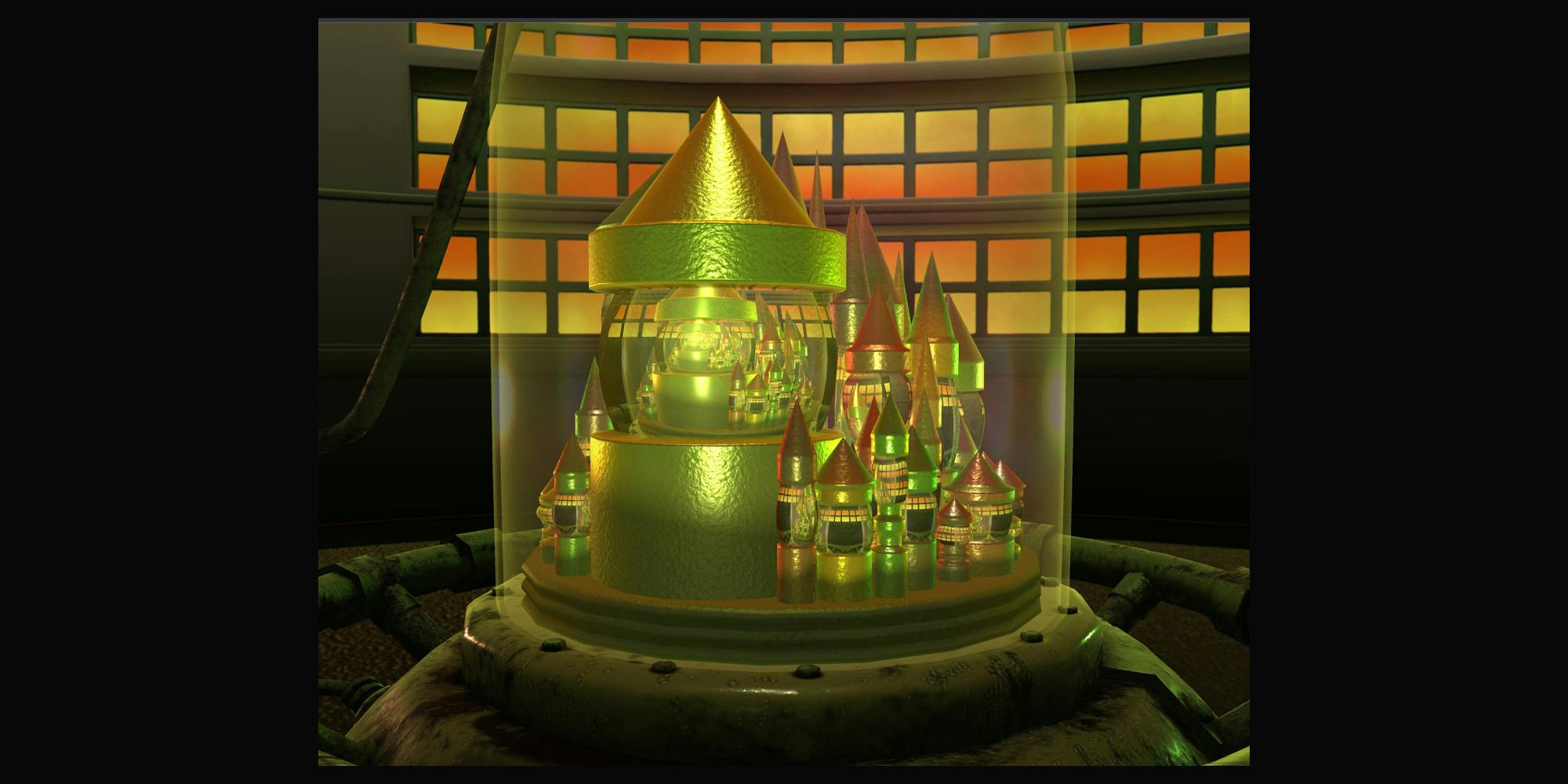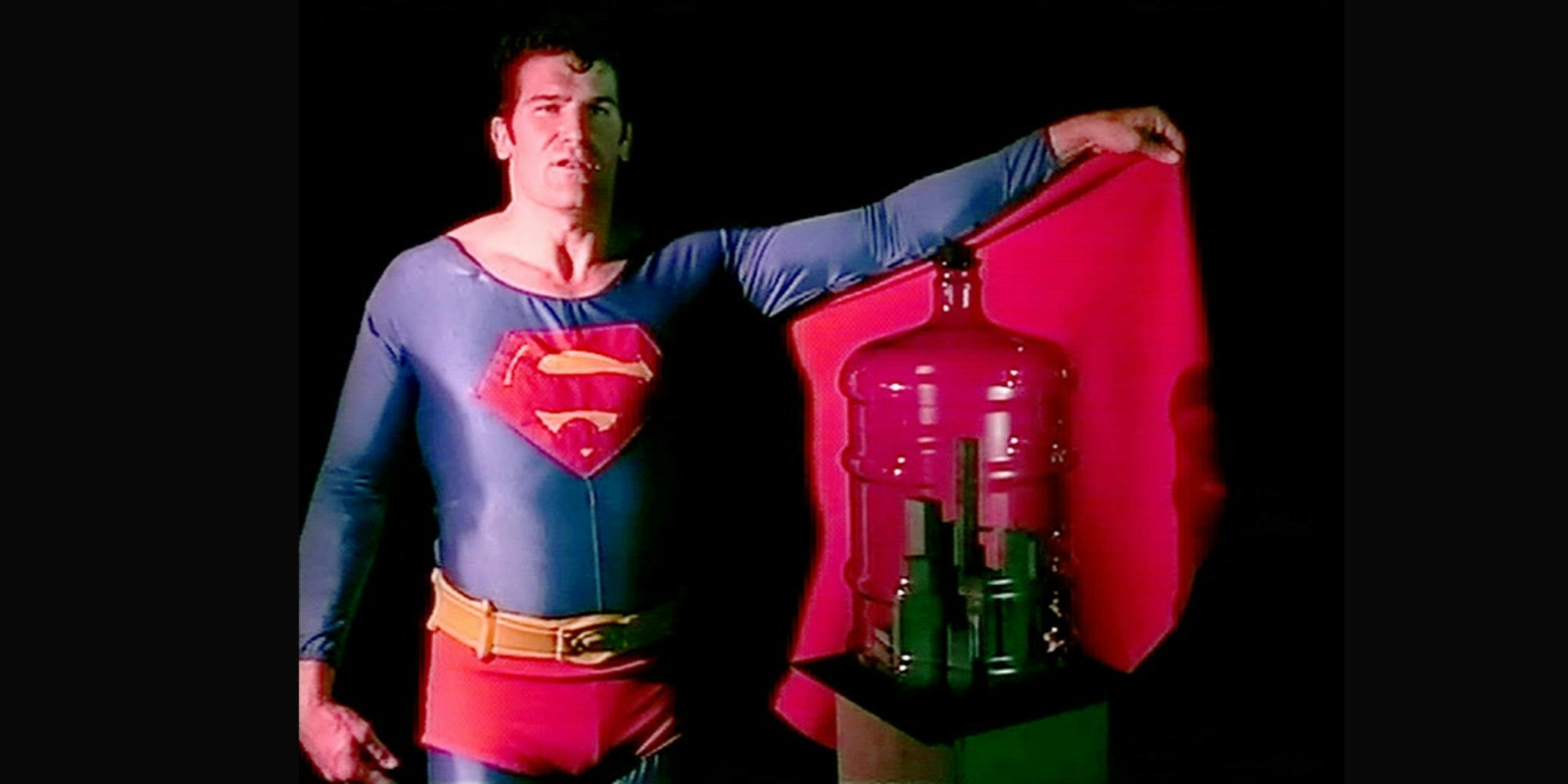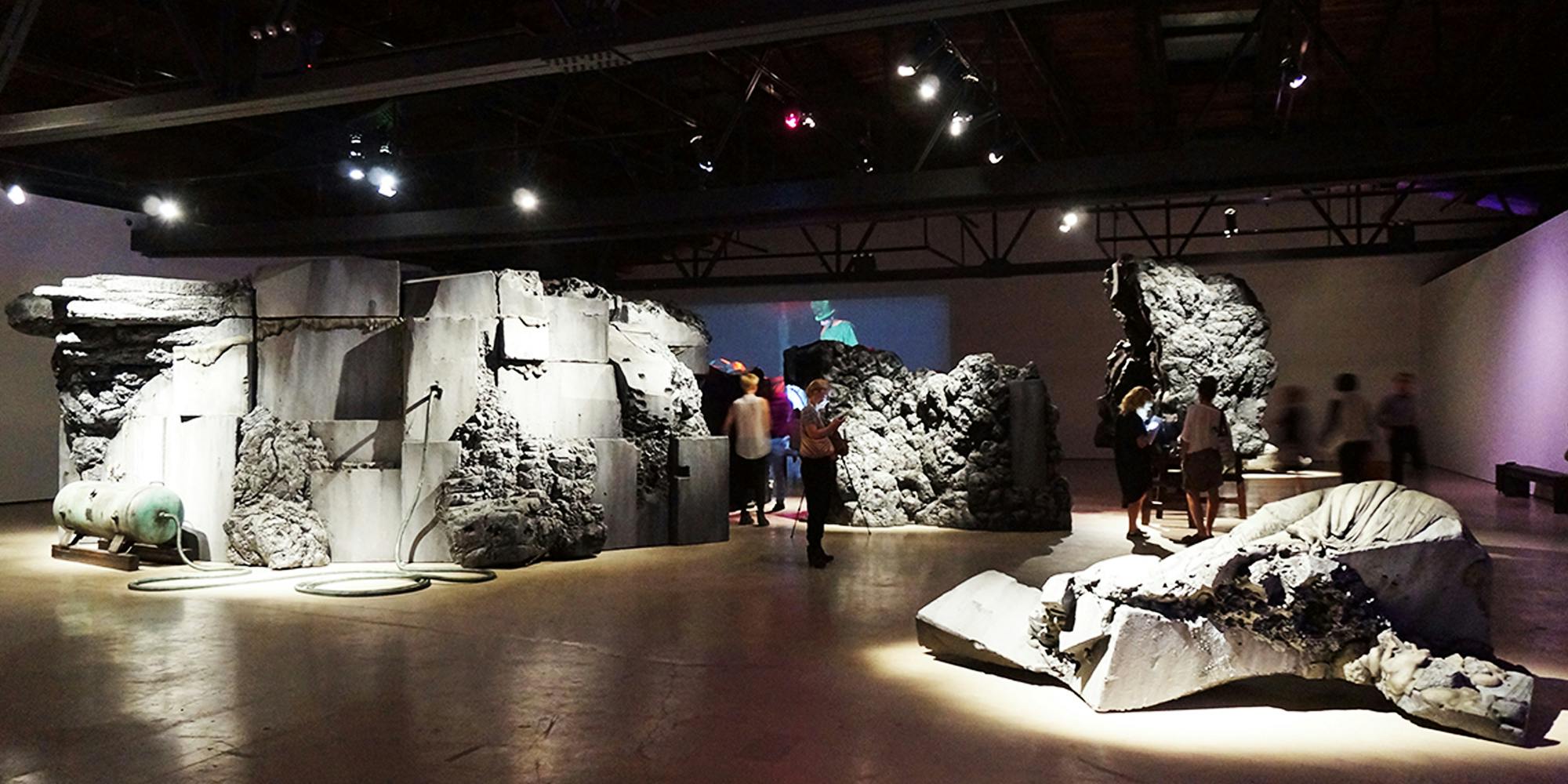Image associations revealed by the subconscious can take us by surprise, even though we made them. The starting image is a freshly-minted collection of vibrant, moody, illuminated, gently interactive, fun, poignant, generative 3D environments by Sam Hains. They show shadowy space, an empty room, not exactly a home, squares of nuclear sky or surveillance, with the focus on an illuminated little castle aggregate in a bell jar.

Lost Home Worlds pays homage to the themes and anatomy of Mike Kelley’s Kandors series. Kelley initiated this work in 1999 and grew it over the subsequent decade into world-making across multiple works and media to directly explore a story:
The popular Superman story recounts the adventures of an alien being sent to Earth as a baby to escape the total destruction of his home planet Krypton. However, it turns out that Kandor was not, in fact, destroyed. Shrunk and bottled by a villain, the futuristic city was rescued by Superman and protected under a bell jar in his sanctuary, the Fortress of Solitude. For almost a quarter-century in comic-book time, Kandor and its miniature citizens survived in Superman’s care, sustained by tanks of atmosphere, a constant reminder of his lost past and a metaphor for his psychic disconnection from his adopted planet. [1]
The miniature world is a reminder of grief for fictional Superman, and for Kelley. And for Sam. For us all, maybe, these images associate something lost: The empty / full room, a shrunken world sustained in a jar.
The image of the bell jar as a tool of psychic disconnection is wrought in the cultural shadow of Sylvia Plath’s death. The Bell Jar is her darkly sharply funny semi-autobiographical story, in which the protagonist describes feelings of being trapped as if in a bell jar, in a life she hasn’t chosen. There are few innocent readings of Plath’s writing because of the heavy posthumous presence, and there’s an undercurrent of voyeurism in the protection of her memory, maintained in its own bell jar.

World-making
The castles in bell jars are little worlds within a world, a long-held human obsession. What’s the appeal? Simulated worlds grant power to whoever is imagining them, and the opportunity to create features without unwanted complexity, devise private games, program consistency and rules alongside absurdity and paradox. They are a creative coalescence of early 21st Century obsessions with virtual world-building, alternative universes, illusions, interface, video games, avatars.
Simulated worlds are also social spaces and social creations. Kelley was aware of this in his Kandor world-building in 1999:
Originally, my proposal for this work included a website where fans of Superman comics could log on and make proposals for the construction of a virtual version of Kandor. One of the things that interested me the most about Kandor is that there is no continuity in its depiction in Superman comics. Its skyline changes from story to story, making it impossible to truly reconstruct. An interactive computer program that would allow the city to be changed continuously, based on fan's input, would be a perfect reflection of the ambiguous nature of the city, and an appropriate model of memory's elusive nature.
... I also proposed to physically bring all of the Superman fans together who met on line via this project. Kandor-Con 2000 would then truly have functioned as a real celebration and meeting place for like-minded people. Of course, this was impossible. A number of large graphs and charts reveal the economic impossibility of bringing these people together. [2]
Kelley had ‘economically impossible plans’ to bring all the fans together in a global, dynamic, interactive social whirl of community building. If he could see us now.
In Kandor, Kelley transforms the emotional core of 2D Superman into real space and real forms and installations; from simple comic drawings to looming rooms and large scale sculptural pieces, illuminated and immersive. In Lost Home Worlds, Hains explores this world through code, through digital space and simulation. Code offers the ability to create almost infinite variables, stretching the 3D generative format to contain time, light, space along with the colourful spectrum of worlds in jars. Everything is variable and changeable, there are thousands of options. So, which one will I keep?

Memory
Unraveling memory is part of psychoanalysis, working out what moments caused the lifelong echo in a personal OS. The expectation is that you confront and strip away, acknowledge the central pain of a truth, then grow and heal. Padding around the truth are soft memories of childhood - a scent, a game, a cereal, a soundtrack, a cartoon, a car trip, a Saturday morning, vivid moments later revealed to have been photos (not memory) all along; feedback loops of a story of home and belonging. Nostalgia selectively adds rather than stripping back, building these fragments over and over, till the simulation solidifies into something at once bigger and smaller than reality.
The Lost Home Worlds, and the castles in bell jars they depict, are little things you hold in your hand and view, safe in your tiny screen. They are NFTs. You own the little world, you got to protect it. Stealing and entirely twisting Kundera’s words here: Nostalgia causes two tears to flow in quick succession. The first tear says: How important this moment was to us! The second tear says: How important to be deeply moved, together with my culture, by that moment [3]. That memory, long ago and distant, shrunken so small, a kernel of a moment now contained safe within a glass globe.
We can move around in these little Lost Home Worlds, the shadowy rooms and the illuminated memories of Superman’s long-gone home. Navigating with a mouse and keyboard in a way that we will soon tenderly recognise as early 2020s we can shift and pan to come up close to that other shrunken world in a jar. A simulation inside a simulation inside a simulation. Images, stories, moments and feelings made for us, and by us; trying to build future and past cultures concurrently, making homes for our avatar emotions.
[1] https://gagosian.com/exhibitions/2011/mike-kelley-exploded-fortress-of-solitude/
[3] Milan Kundera’s description of the ideology of kitsch, which I superficially reinterpreted for nostalgia. The actual quote is: "Kitsch causes two tears to flow in quick succession. The first tear says: How nice to see children running on the grass! The second tear says: How nice to be moved, together with all mankind, by children running on the grass!”